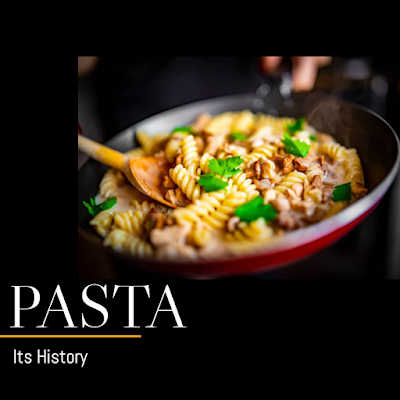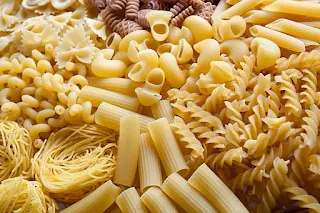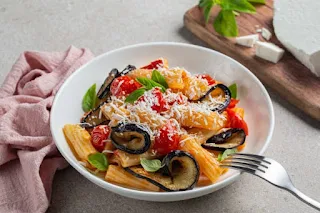Introduction
Pasta is a well-liked component of many different cuisines, from the traditional Italian spaghetti to the fiery Korean jajangmyeon. It is a flexible ingredient that may be prepared in a plethora of ways and combined with an infinite number of sauces and other ingredients. But from where did pasta originate, and how did it come to play such a significant role in world cuisine? In this essay, we will delve into the intriguing origins of pasta in ancient China as well as its contemporary cultural importance. The evolution of regional pasta specialties in Italy, the globalization of pasta, and the effects of industrialisation on pasta production and consumption will all be covered. We'll also talk about the advantages of pasta for your health and how it fits into a healthy diet. We will obtain a deeper understanding of pasta's complex cultural significance and its lasting appeal in cuisines all around the world via this investigation.
Early Origins of Pasta
The exact origin of pasta is still a subject of debate among historians and scholars, but there are several theories on how it came to be. One popular theory suggests that pasta was first created in ancient China, where cooks made a type of noodle from millet or rice flour. From there, it's believed that the noodle spread along the Silk Road trade route to the Mediterranean, where it eventually evolved into the pasta we know today.
Another version argues that pasta originated separately in many regions of the world, with early evidence appearing in the cultures of the ancient Etruscan and Greek peoples. These prehistoric pastas were probably dried for later use and storage and were fashioned using barley or wheat flour and water. During the Islamic invasion of Sicily in the seventh century, dry pasta is thought to have been introduced by the Arabs, who are also credited with contributing to the development of pasta.
Regardless of where it originated, pasta was a common dish throughout Italy by the Middle Ages, especially in the south where durum wheat was plentiful. Italian regions took delight in the invention of various pasta forms and types, with each region claiming to have its own distinctive delicacies. Italian pasta dishes, from the traditional spaghetti carbonara to the hearty Emilia-Romagna lasagna, continue to be a regional specialty today.
Pasta in Italy
In terms of pasta, Italy is arguably the most well-known nation, and with good reason—pasta has been a staple food in Italy for generations, and the country's cuisine is famed for its wide variety of mouthwatering pasta dishes.
During the Renaissance, several areas of Italy perfected their own distinctive pasta styles, which led to the emergence of regional pasta specialties in Italy. For instance, pasta is commonly prepared from durum wheat in the south of Italy and eaten with tomato-based sauces, but egg-based pasta is more prevalent in the north of Italy and frequently served with cream-based sauces.
Additionally significant to Italian culture and identity is pasta. In Italy, making pasta by hand is regarded as an art form, with families handing down their ancestral methods and recipes for creating pasta from generation to generation. Pasta is also a common theme at many Italian festivals and events, like the yearly spaghetti festival held in Verrua Savoia, Piedmont.
Pasta dishes from Italy that are among the most well-known include lasagna, fettuccine alfredo, penne arrabbiata, and spaghetti carbonara. Each of these recipes showcases the inventiveness and zeal of both professional and home cooks in Italy, and pasta lovers all over the world continue to savor them.
Pasta in Europe and Beyond
Pasta started to go outside of Italy and into other regions of Europe in the 16th century when trade channels opened up. Pasta first appeared in Spanish meals like fideos and paella, while it first appeared in French dishes like gratins and casseroles. Pasta also traveled to the Middle East, where it was used in recipes like kofta bi tahini in Lebanon and koshari in Egypt.
Since Italian immigrants brought their traditional pasta recipes to the New World in the late 19th century, pasta has been a popular food in the United States. Pasta is a common element in American food today; pasta-based dishes like spaghetti and meatballs, macaroni and cheese, and pasta salads can be found on menus all throughout the nation.
In other regions of the world, particularly in Asia, pasta has also gained popularity. In Korea, pasta is used in inventive and tasty ways in meals like ramyeon (instant noodles) and jjajangmyeon (black bean paste noodles), while pasta dishes like spaghetti Napolitan and mentaiko spaghetti have gained popularity in Japan.
Although pasta is prepared differently in every culture, its widespread use is proof of its versatility and enduring appeal. Pasta continues to be a much adored food whether it is included in a traditional Italian dish or a brand-new, creative creation.
The Industrialization of Pasta
Pasta production underwent substantial modifications during the 19th century Industrial Revolution. Pasta was typically produced by hand before this time, and small-scale production occurred in family-run enterprises. However, when the market for pasta expanded outside of Italy, producers started experimenting with mechanizing the production of pasta.
One of the most important innovations in the industrialization of pasta was the invention of the pasta extruder, which allowed for large-scale production of pasta in a variety of shapes and sizes. The first pasta extruder was invented in the early 20th century by Italian inventor and engineer Attilio Pagli, and it revolutionized the pasta industry by allowing manufacturers to produce large quantities of pasta quickly and efficiently.
The production of pasta underwent changes as a result of its industrialisation. New pasta shapes like fusilli, penne, and rotini started to appear, but traditional Italian pasta shapes like spaghetti, fettuccine, and lasagna continued to be popular. These novel forms were frequently created especially for use in particular recipes or to appeal to specific audiences.
However, some detractors contend that the quality and originality of pasta have suffered as a result of its industrialisation. The components used to make mass-produced pasta are frequently of lesser quality, and the methods used to process it can change the flavor and texture of the pasta. Additionally, some contend that the industrial manufacture of pasta has lost some of the creativity and tradition that have made it such a significant component of Italian culture due to the emphasis on efficiency and uniformity.
Despite these reservations, pasta has been industrialized, making it a widely accessible and reasonably priced cuisine on a global scale. Pasta is still a vital component of Italian food and culture today and is enjoyed by people of all ages and socioeconomic levels.
Health and Nutritional Benefits of Pasta
Although pasta is frequently vilified as a bad food, it can actually be a wholesome and nutritious component of a balanced diet. Pasta is a great source of complex carbs, which give the body sustained energy. This is one of the biggest advantages of pasta. Pasta also has fiber, which is important for digestive health and is low in fat and cholesterol.
Since whole wheat pasta contains more fiber and other nutrients than conventional pasta manufactured from refined flour, it is an even healthier choice. The protein in whole wheat pasta is also beneficial for mending and growing muscles.
Pasta is a flexible food that can be used in a range of nutritious cuisines in addition to its nutritional advantages. Both pasta dishes with tomato-based sauces and an abundance of fresh herbs, as well as pasta salads packed with veggies and lean protein like grilled chicken or shrimp, may be nutritious and fulfilling meals.
Naturally, it's crucial to consider portion proportions when eating pasta because it's simple to overeat and eat too many calories. However, pasta can be a tasty and healthy complement to any meal plan when eaten in moderation as part of a balanced diet.
Conclusion
In conclusion, the history of pasta is lengthy and fascinating, spanning many epochs and continents. Pasta has had a profound impact on a variety of cultures and cuisines, from its humble beginnings in ancient civilizations to its current appeal as a cherished delicacy around the world.Pasta remains a basic cuisine that may be enjoyed in a variety of forms and preparations, despite changes brought on by the industrialization of its production and consumption. Pasta continues to be a flexible and adored ingredient that unites people, whether it is used in a classic Italian meal or incorporated into a fresh and inventive recipe.
Furthermore, when eaten in moderation as part of a balanced diet, pasta not only tastes good but also has a number of health and nutritional advantages. Whole wheat pasta is an even better alternative because it gives the body the critical carbohydrates, fiber, and protein that it needs.
In conclusion, pasta's history, global ubiquity, and capacity to unite people around the table all attest to its cultural relevance. Pasta has established itself as one of the most well-liked and durable foods in the world due to its deliciousness and nutritional value.





wow
ReplyDeletecleaning service in kathmandu